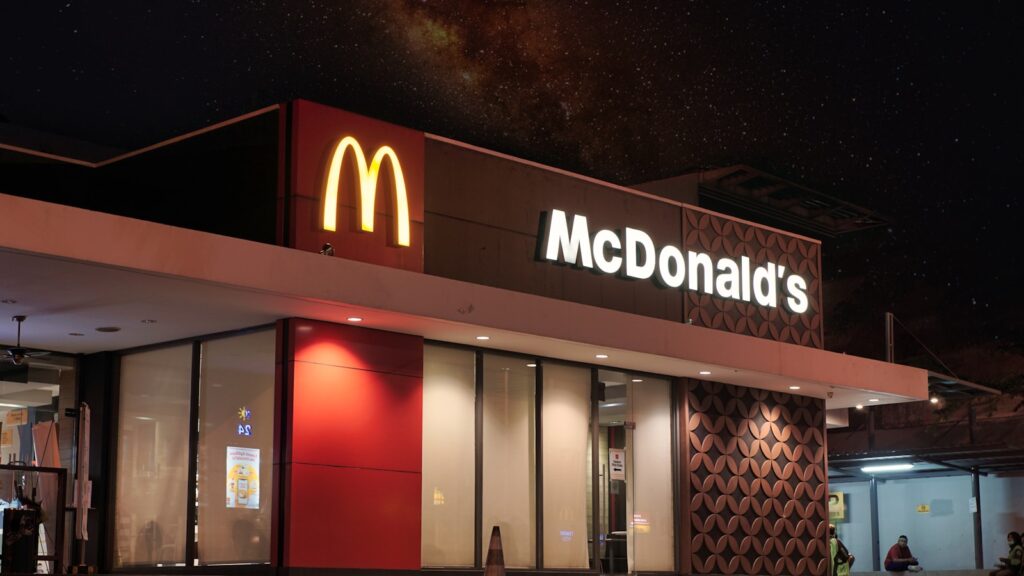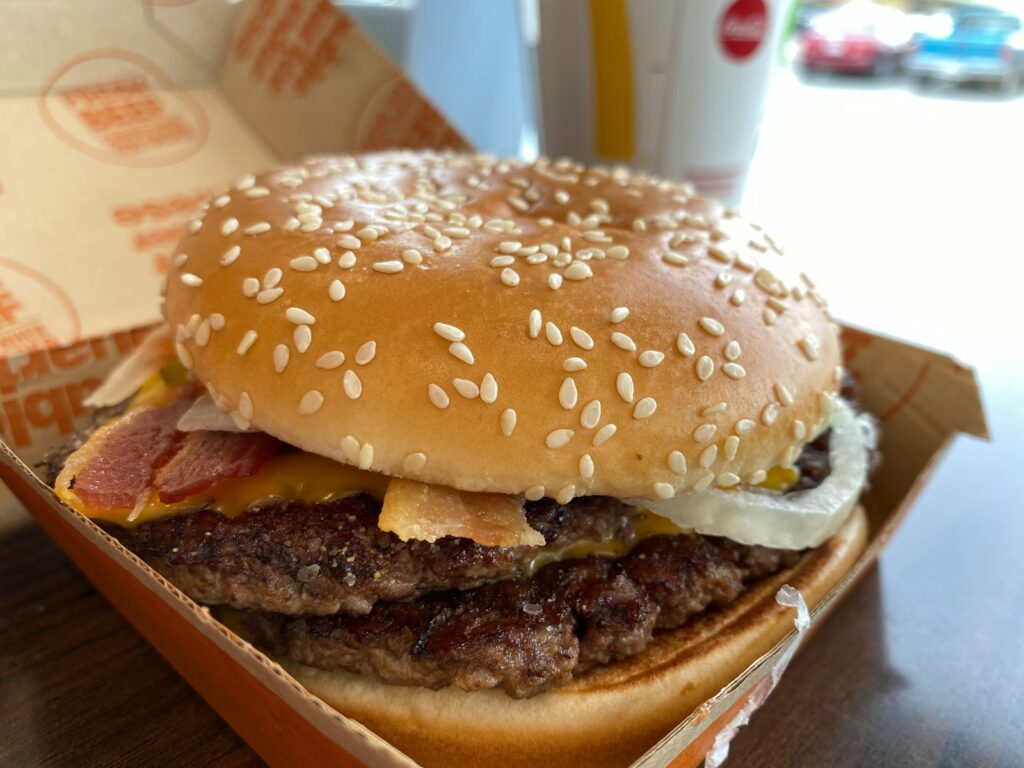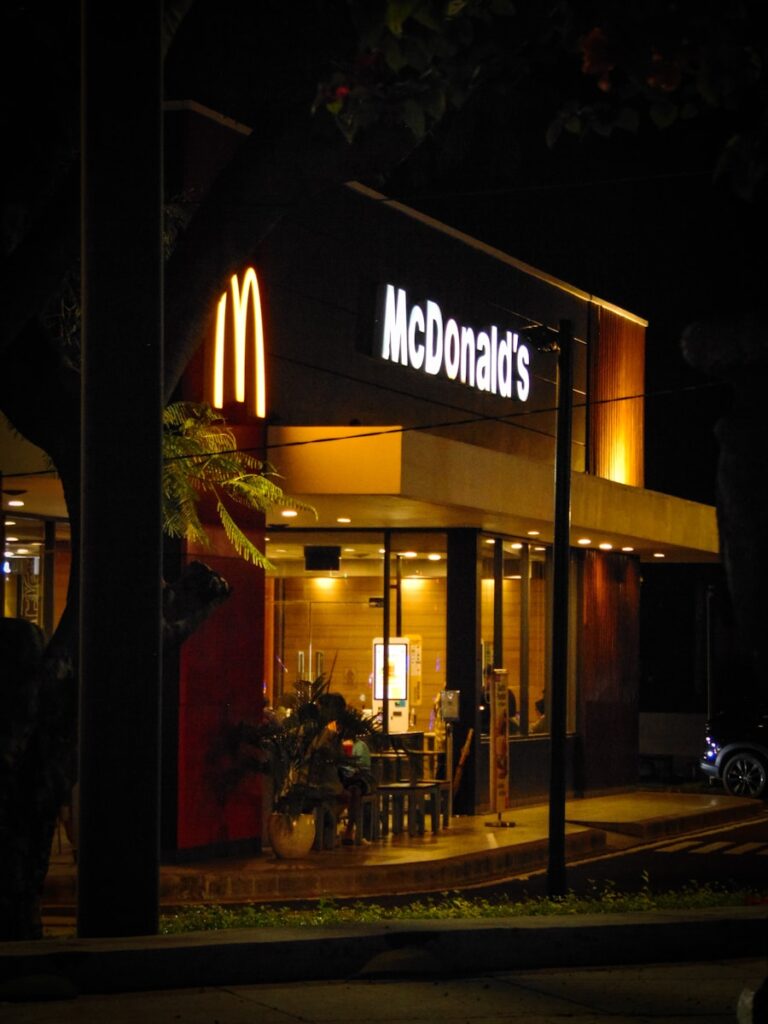
McDonald’s Quarterly Growth Surges
McDonald’s has demonstrated a notable resurgence in its recent quarterly performance, reporting earnings and revenue that significantly exceeded analysts’ expectations. This robust recovery reflects a major turnaround for the company’s U.S. operations, fueled by strategically executed promotions and innovative menu offerings that have successfully revitalized consumer interest and traffic. The performance highlights McDonald’s adaptability in navigating a complex economic environment.
The fast-food leader reported a second-quarter net income of $2.25 billion, or $3.14 per share, up from $2.02 billion, or $2.80 per share, in the same period last year. Excluding restructuring charges and other items, the company achieved adjusted earnings of $3.19 per share, surpassing the $3.15 projected by Wall Street analysts surveyed by LSEG. Revenue increased 5% to $6.84 billion, exceeding the forecast of $6.7 billion.
This growth was supported by a 3.8% rise in global comparable sales, marking the largest increase in nearly two years and signaling broad-based revitalization across McDonald’s extensive network. U.S. restaurants recorded a 2.5% increase in same-store sales, reversing two consecutive quarters of domestic declines and demonstrating the effectiveness of the company’s targeted initiatives. CEO Chris Kempczinski emphasized that McDonald’s outperformed its competitors in both same-store sales and comparable traffic.

U.S. Sales Boosted by Value and Promotions
The recent U.S. domestic growth for McDonald’s can be largely attributed to the company’s renewed focus on value and strategic marketing. CEO Chris Kempczinski, in the company’s earnings release, credited the chain’s steadfast commitment to value, innovative marketing campaigns, and the introduction of compelling new menu items for a 6% increase in system sales during the quarter. These factors collectively created an attractive proposition for a wide range of consumers.
Key drivers of this success included a series of well-executed promotional partnerships and menu innovations. Notably, a tie-in meal with the “Minecraft” movie generated immediate traffic surges and high consumer engagement. The associated collectibles, intended to last four weeks, sold out in less than two weeks, reflecting the promotion’s exceptional popularity.
In addition, McDonald’s introduced McCrispy Chicken Strips, marking the first permanent addition to the U.S. menu in four years. The item has demonstrated strong consumer reception in restaurants where it was soft-launched, with a positive take rate reported. The McCrispy platform is expected to provide a broader strategic benefit, enabling the reintroduction of other popular menu items.

Global Sales Strengthened by Menu Hits
The highly anticipated return of Snack Wraps to McDonald’s U.S. menu, the first in nine years, shortly after the quarter concluded, has already produced encouraging early results. Franchisees have voted to maintain the promotional price of $2.99 through the end of the year, reflecting confidence in the item’s continued appeal and its ability to drive volume, particularly among value-conscious consumers.
Beyond the domestic market, McDonald’s success has extended internationally. Demand for iconic items such as Big Macs and French fries has remained strong. CEO Chris Kempczinski noted that the international market is not as competitive as the U.S., providing an opportunity for the chain to stand out and offer good value. This advantage has supported the company’s growth in key global regions.
The international developmental licensed markets division, including major regions such as Japan and China, reported same-store sales growth of 5.6%. Meanwhile, the international operated markets segment, encompassing robust economies such as the United Kingdom, Australia, and Canada, achieved a 4% increase in same-store sales. Executives highlighted that McDonald’s value and affordability scores have improved significantly across these critical international markets.

Focusing on Value for Low-Income Customers
Despite strong financial performance and strategic successes, McDonald’s leadership remains attentive to the economic challenges faced by low-income consumers in the United States. This demographic represents a substantial portion of the customer base and frequently visits the chain’s restaurants. CEO Chris Kempczinski emphasized during the company’s earnings conference call that “Reengaging the low-income consumer is critical, as they typically visit our restaurants more frequently than middle- and high-income consumers.
This highlights a bifurcated consumer base within the U.S. market, where spending patterns and economic sensitivities differ across income groups. Kempczinski noted that this division is precisely “why we remain cautious about the overall near-term health of the U.S. consumer.” The challenge for McDonald’s lies in ensuring its offerings appeal to all economic segments, particularly those most affected by current economic pressures.
Industry data reinforces this concern. Overall quick-service restaurant traffic in the U.S. has faced headwinds, with visits from low-income consumers declining by double digits compared to the prior year. This trend reflects the tangible impact of economic constraints on daily spending, prompting value-conscious consumers to reconsider discretionary dining expenditures.

Addressing Price Perception Challenges
McDonald’s CEO Chris Kempczinski further explained the factors underlying consumer unease, noting that for low-income populations, “real incomes are down” despite recent wage increases. He described the sentiment among these consumers as “a lot of anxiety and unease,” attributing potential causes to tariffs, employment uncertainties, and other systemic pressures that contribute to cautious spending.
These economic concerns directly influence consumer behavior. Many individuals are either skipping meals, particularly breakfast, or “trading down” by selecting less expensive menu items or choosing to eat at home. Executives identified breakfast as the most “economically sensitive” meal of the day, with stressed consumers often deciding to “either skip breakfast or choose to eat breakfast at home.
Pricing perceptions represent a critical challenge. For numerous budget-conscious customers, fast food has become “too expensive.” Kempczinski acknowledged that “too often, if you’re that consumer, you’re driving up to the restaurant and you’re seeing combo meals could be priced over $10, and that absolutely is shaping value perceptions in a negative way.” He emphasized the company’s commitment, stating, “We’ve got to get that fixed.
Efforts to address value perceptions are pursued in close collaboration with McDonald’s extensive network of U.S. franchisees, who operate approximately 93% of the chain’s restaurants globally. Implementing uniform promotional pricing can be complex, as some franchisees express concerns about profit margins affected by rising labor, food, and operating costs.

Enhancing Value and Beverage Offerings
McDonald’s is engaging in “active and productive” discussions with its franchisees to identify effective ways to make core menu items more affordable, expanding beyond initiatives such as the successful $5 meal deal. These efforts aim to ensure that attractive, value-driven offerings are consistently available throughout the U.S. network, aligning corporate strategy with local implementation.
The company recognizes a strategic imperative for “nationally advertised price points,” providing consumers with consistent and predictable value. This approach reinforces McDonald’s brand as accessible and affordable nationwide, addressing potential negative perceptions caused by inconsistent pricing at individual locations.
In addition to immediate affordability, McDonald’s is investing strategically in new growth areas, particularly within its beverage category. The company is testing a diverse range of new beverages, including cold coffees, fruity refreshers, crafted sodas, and innovative energy drinks, across 500 restaurants. This initiative represents a substantial market opportunity and reflects the chain’s focus on expanding consumer engagement beyond traditional menu items.

Beverage Expansion and Market Resilience
CEO Chris Kempczinski emphasized the strategic significance of the beverage segment, describing it as “a really large market opportunity” that is actively “growing, and it’s more profitable than food.” If the ongoing trials succeed, these new beverage offerings are expected to expand across U.S. locations, diversifying McDonald’s revenue streams and appealing to a wider demographic seeking varied drink options.
Executives express optimism regarding the company’s performance for the remainder of the fiscal year, projecting stronger results in the second half. This outlook is supported by the expectation of easier comparisons in the fourth quarter, particularly following last year’s E. coli outbreak, which had notably reduced demand. Momentum is anticipated to build as the year progresses, sustaining the positive trends observed in the second quarter.
Despite industry-wide challenges, with competitors such as Yum Brands and Chipotle experiencing consumer pullback, McDonald’s demonstrated notable resilience and strategic execution. According to eMarketer analyst Zak Stambor, the company “played to its strengths by leaning into value, nostalgia, and limited-time promotions.” McDonald’s outperformance is evident, with visits increasing by 0.8%, while the overall quick-service restaurant sector experienced a 0.7% decline during the same period, as reported by Placer.ai.

Solidifying Market Leadership
McDonald’s commitment to value and enhanced customer experience has resulted in measurable improvements in consumer sentiment. Customer satisfaction scores in the U.S. have reached an all-time high, reflecting the positive reception of the company’s initiatives to re-engage its core customer base. This strong consumer affinity, combined with its ability to outperform competitors in guest counts, reinforces McDonald’s leading market position.
The company’s second-quarter performance, marked by a notable rebound in U.S. sales and robust international growth, highlights its strategic capabilities and operational agility. Although concerns regarding the low-income consumer segment remain central to leadership, McDonald’s proactive collaboration with franchisees, dedication to value-driven offerings, and innovative menu expansions demonstrate a deep understanding of its diverse customer base and the evolving economic environment.
With a 70-year legacy defined by “innovation, leadership, and proven agility,” the Golden Arches continues to navigate challenging market conditions with a clear strategic vision, positioning itself not only to recover but also to expand its market share and sustain its iconic presence.



